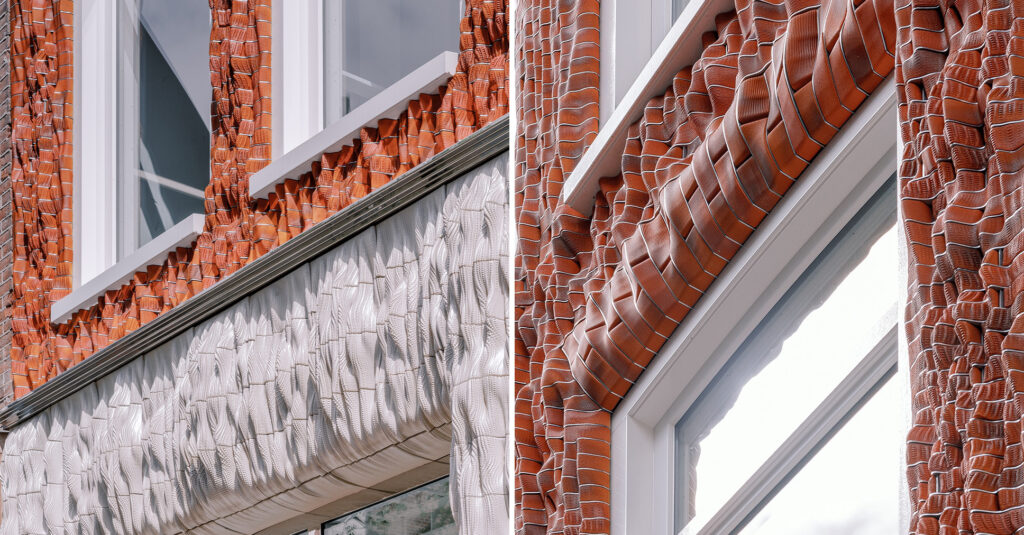Architects: Want to have your project featured? Showcase your work by uploading projects to Architizer and sign up for our inspirational newsletters.
At its peak, the global textile industry accounted for over half of all factory workers worldwide, fueling the rise of industrial architecture from Manchester to Mumbai. The sheer scale of production demanded innovations in building design like we had never seen before. Multi-story brick mills expanded the use of cast-iron frames; sawtooth roofs optimized daylight; and vast floor plate prefigured the open-plan logic of modernism. The architecture of the textile mill was very much the blueprint for the contemporary factory and even the modern office model as we understand it today.
However, it isn’t just what was on the outside of a textile mill that has influenced architects for decades, what’s on the inside has equally inspired some incredible designs. From Gottfried Semper’s theory that weaving gave us the first walls to mosaics that mimic materials. Architects have pleated panels, embroidered entryways, and stitched steel all in the tradition of textiles. For something inherently soft, textiles have had an unexpectedly firm grip on the architecture industry, and the following nine projects show the stunning results that can be achieved when architects draw their creativity from cloth.
Herning Museum of Contemporary Art
By Steven Holl Architects, Herning, Denmark
-
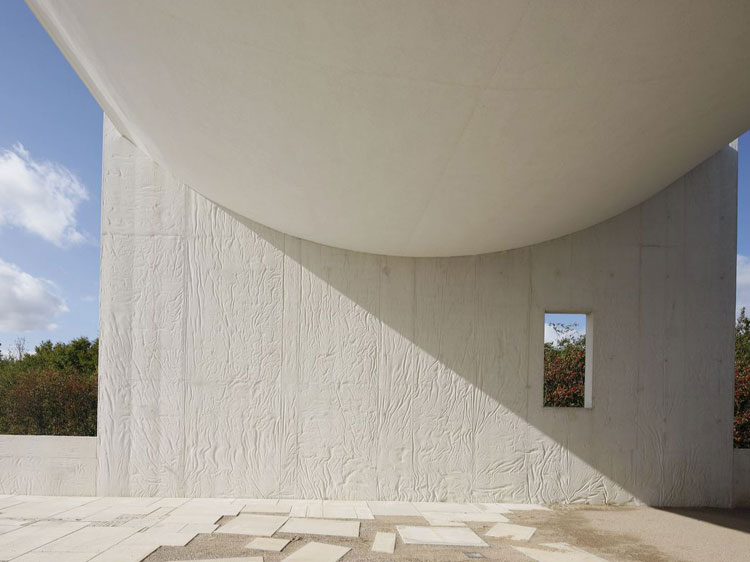
Photos by Iwan Baan
A museum designed with textiles in mind makes perfect sense for Herning. The roof, shaped like folded shirt sleeves, nods to the town’s history as a hub for garment production. Even the concrete walls pick up the theme, their fabric-like texture created by pressing truck tarps into the formwork. Inside, solid gallery walls give the art its due, while curved ceilings soften the light. Outside, sculpted mounds extend the building’s geometry into the landscape, tying everything together with a careful attention to material and form.
The Veil House
By Paperfarm Inc, Kaohsiung City, Taiwan
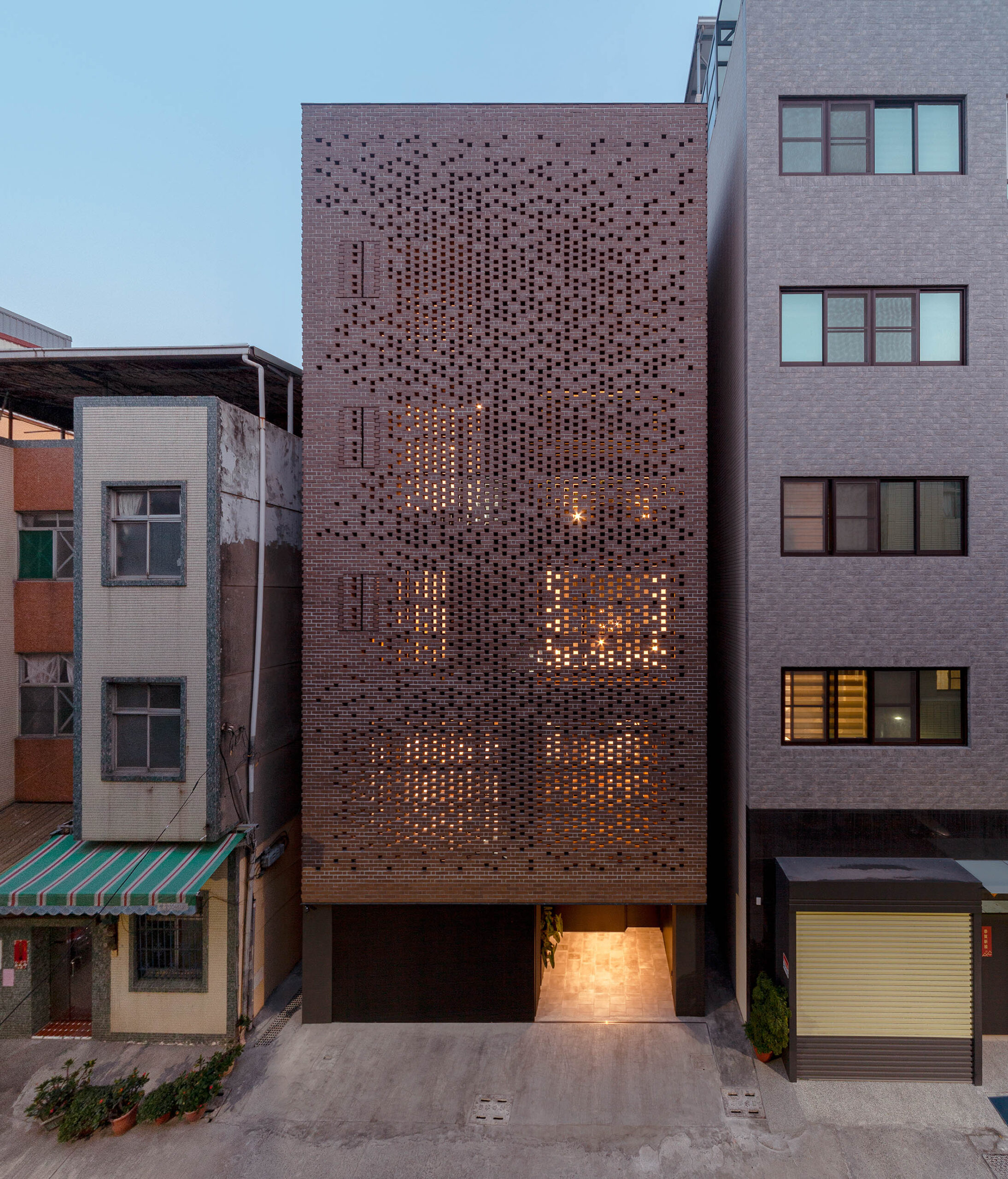
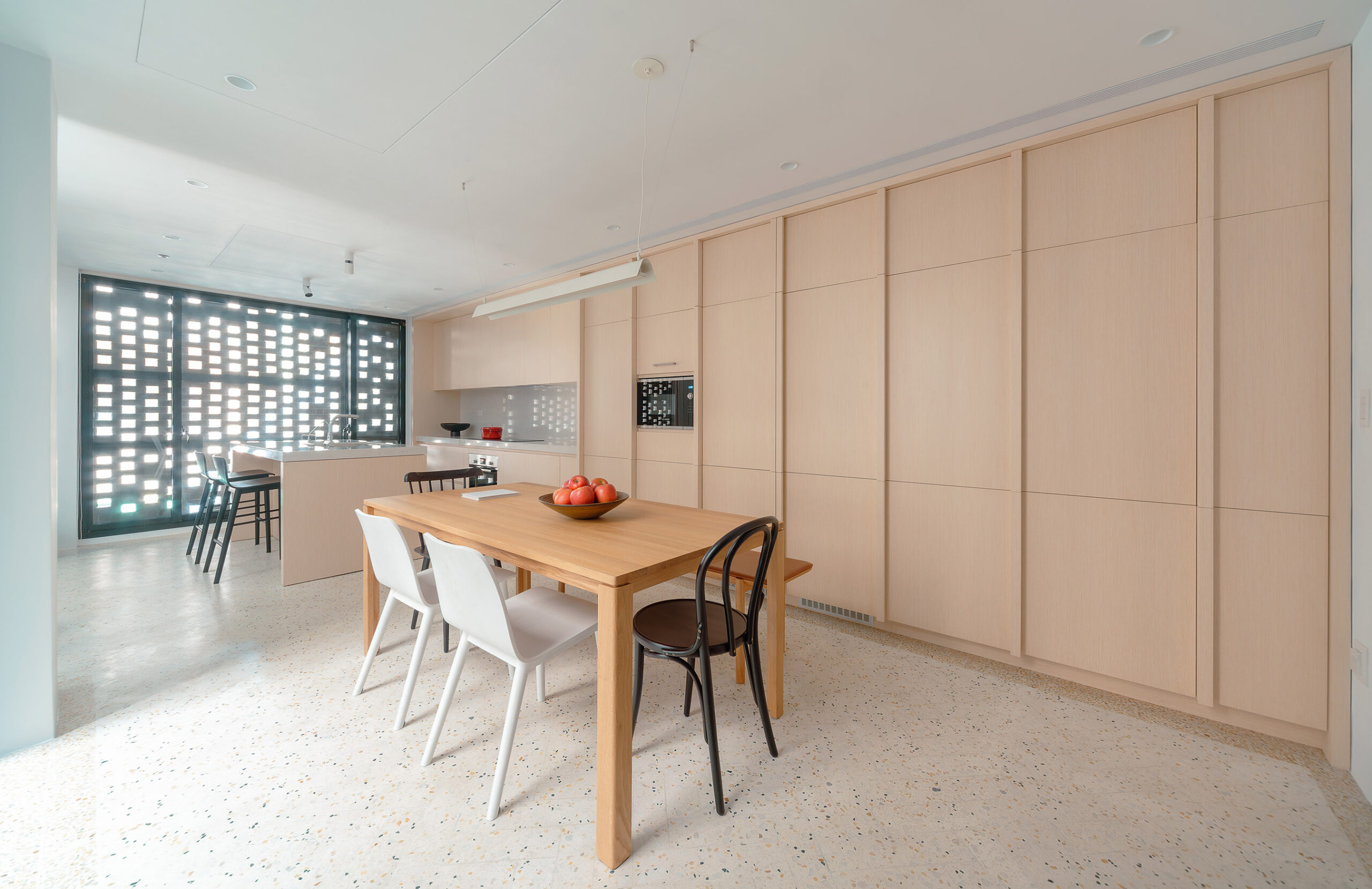
Photos by Daniel Yao
Built in a dense neighborhood where privacy is scarce, The Veil House takes its name quite literally. Its brick façade is arranged like a woven textile, changing in density to control light, air, and visibility where required. Inspired by the district’s historic brick kilns, the design uses floating clay bricks to create its tapestry-like façade, becoming a screen that is both structural and stunning. Behind it, a central atrium pulls as much light as possible deep into the house, carefully finding the balance between openness and enclosure.
Brick Weave House
By 4site architects, KA, India
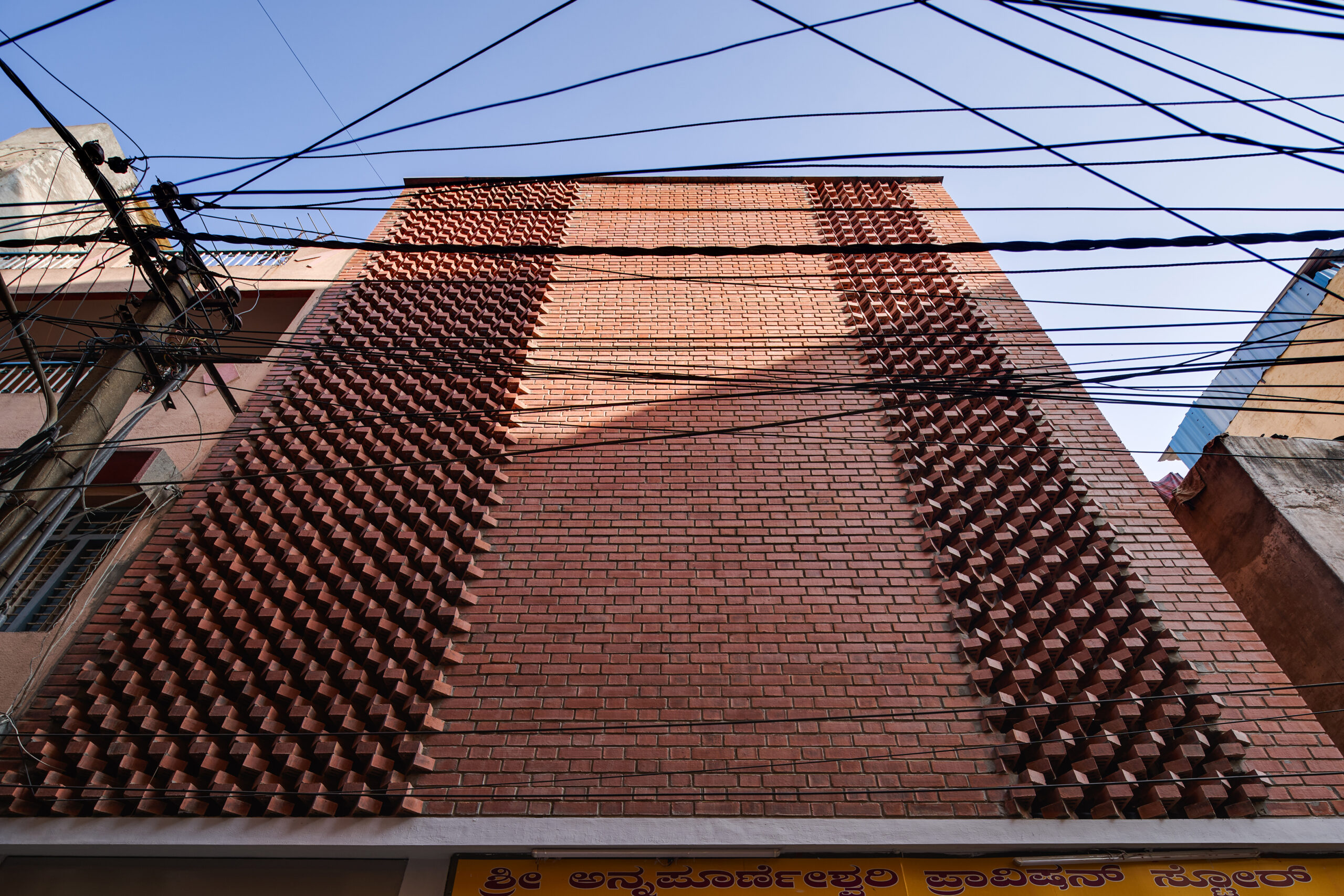
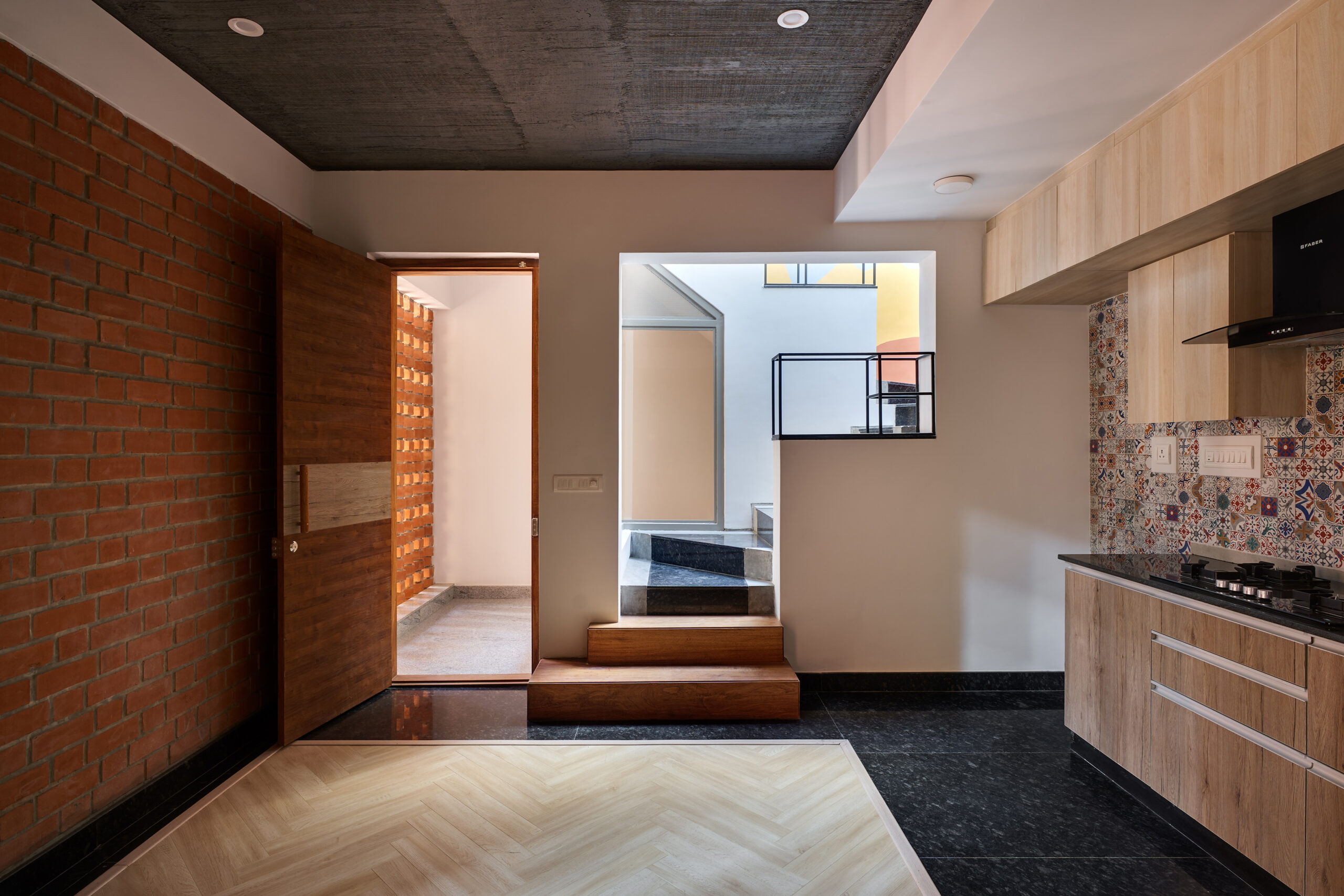
Photos by Shamanth Patil J.
Cubbon Peth historically housed Bangalore’s oldest handloom silk weavers’ colony. But post industrial revolution, handcrafted silk weaving art was lost. With the intent of preserving the idea of a traditional weaving, the facade of Brick Weave House is a woven screen of bricks, threaded onto steel rods and rotated at precise angles to balance light, ventilation, and privacy. By day, the screen scatters shifting patterns of light through the interiors. By night, the house glows, casting its intricate weave pattern back onto the street.
Ferrum 1
By TCHOBAN VOSS Architekten, Saint Petersburg, Russia
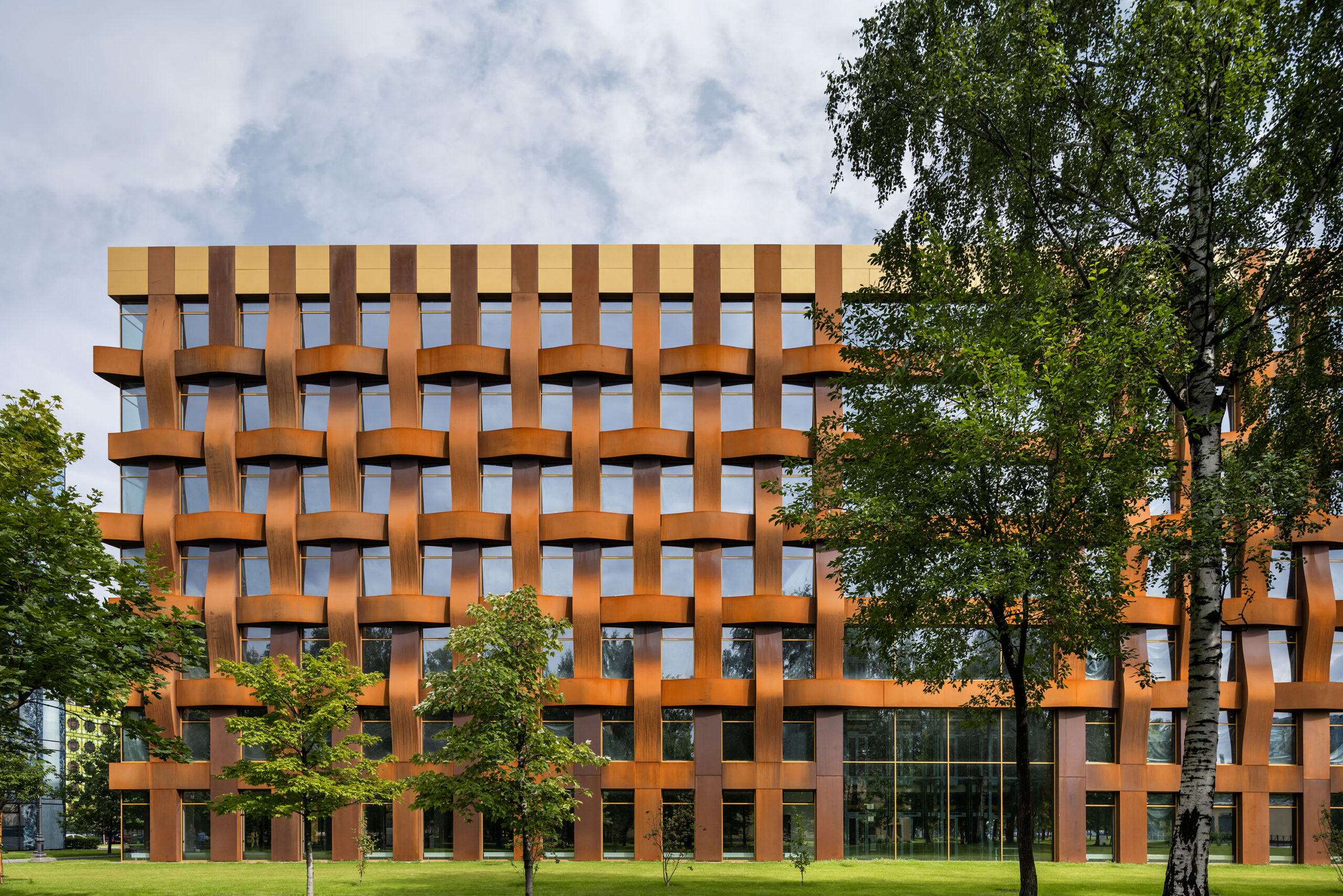
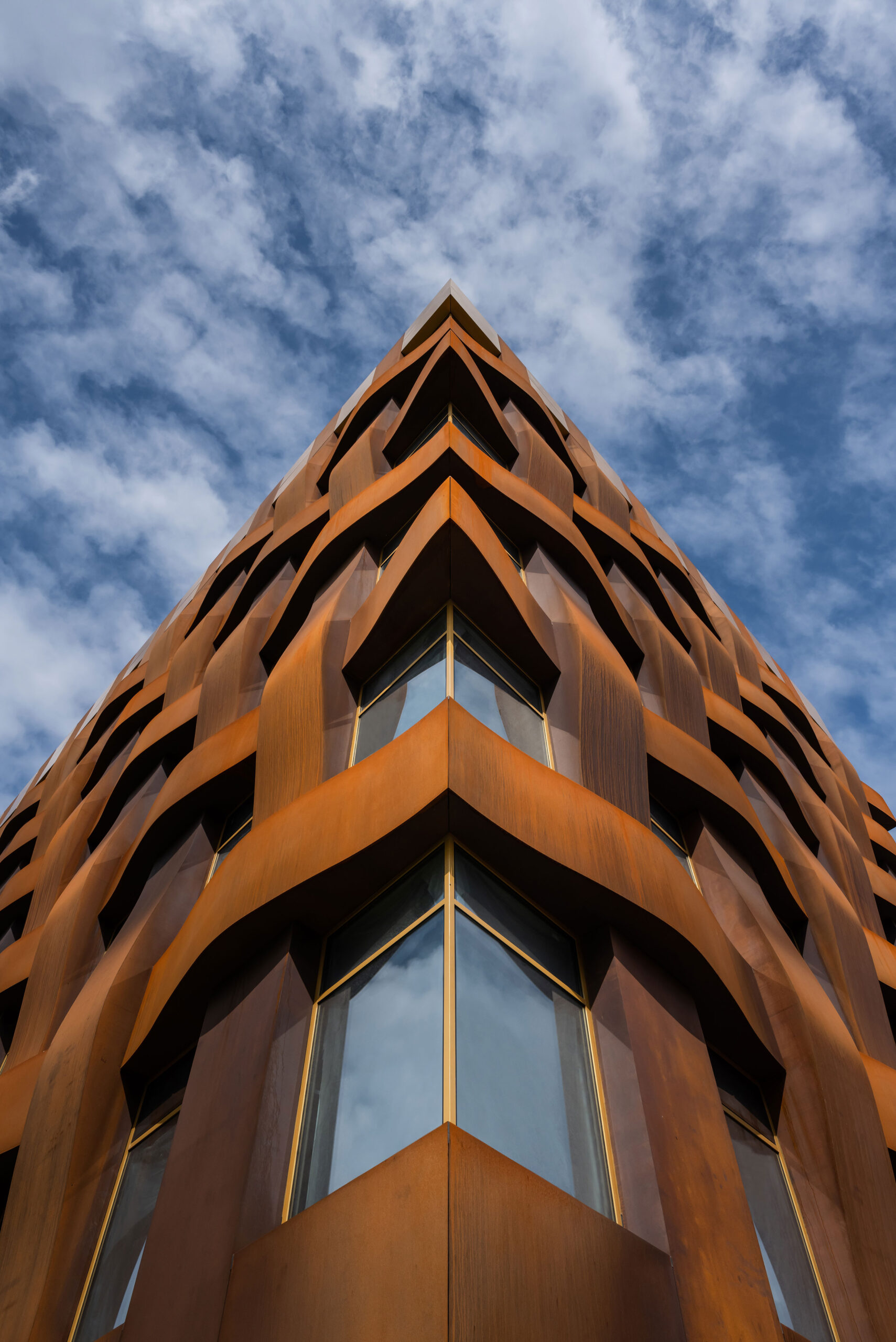
Photos by Ilya Ivanov
The Corten steel façade of Ferrum 1 is designed as a woven grid, with horizontal and vertical bands appearing to thread through one another, creating the illusion of warp and weft. The material choice is no accident. The deep rust-red patina is a reference to the site’s industrial past, once home to the Rossiya factory, while the name itself (Latin for iron) reinforces its connection to the city’s manufacturing heritage. At the corners, structural glazing cuts through the steel, juxtaposing the weight with moments of lightness and transparency. Inside, the theme shifts. Gold-toned finishes replace the raw exterior, creating a deliberate tension between industrial and refined: “Rust on the outside, gold on the inside.”
Paul Smith, Mayfair
By 6a architects, London, United Kingdom
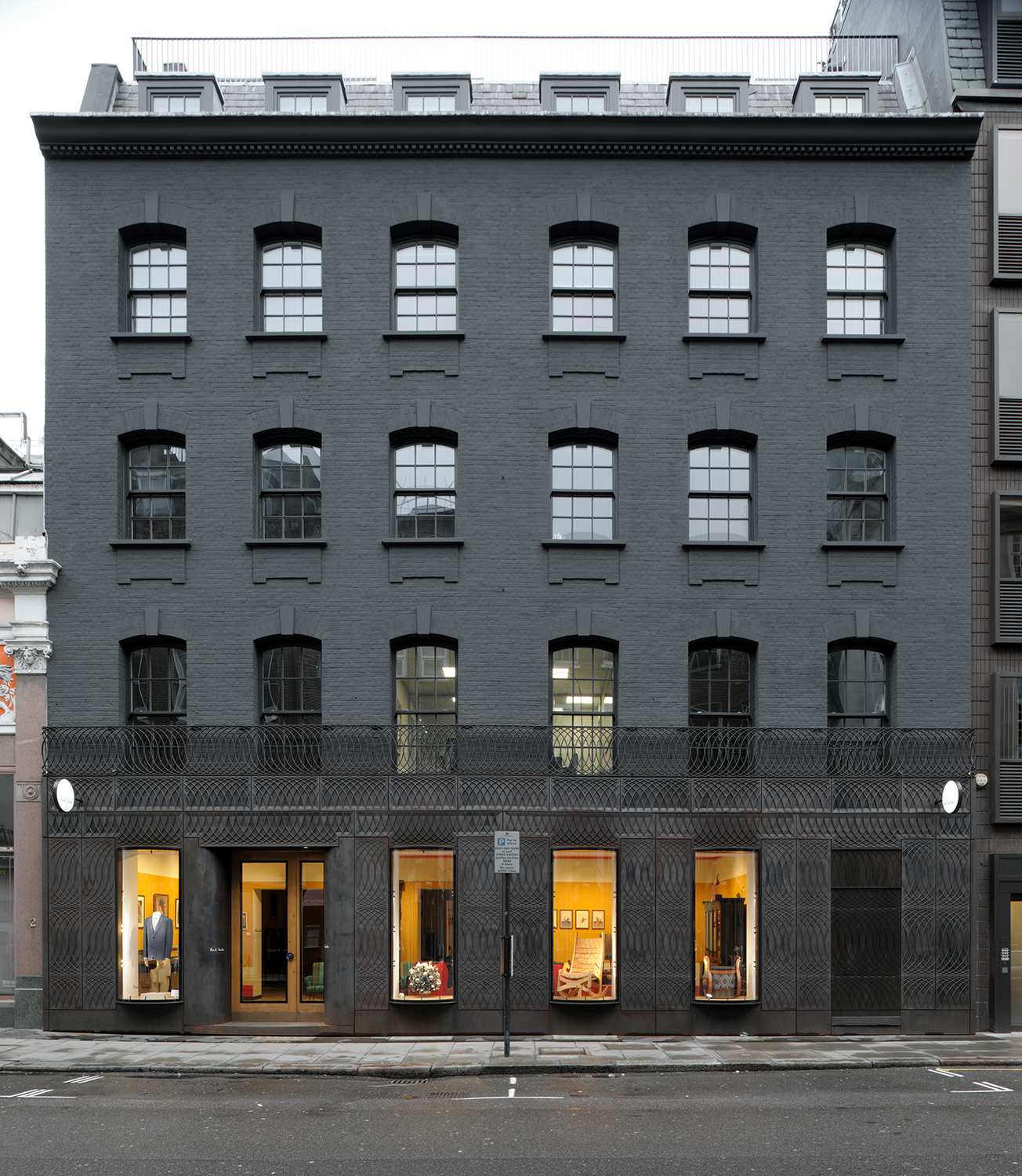
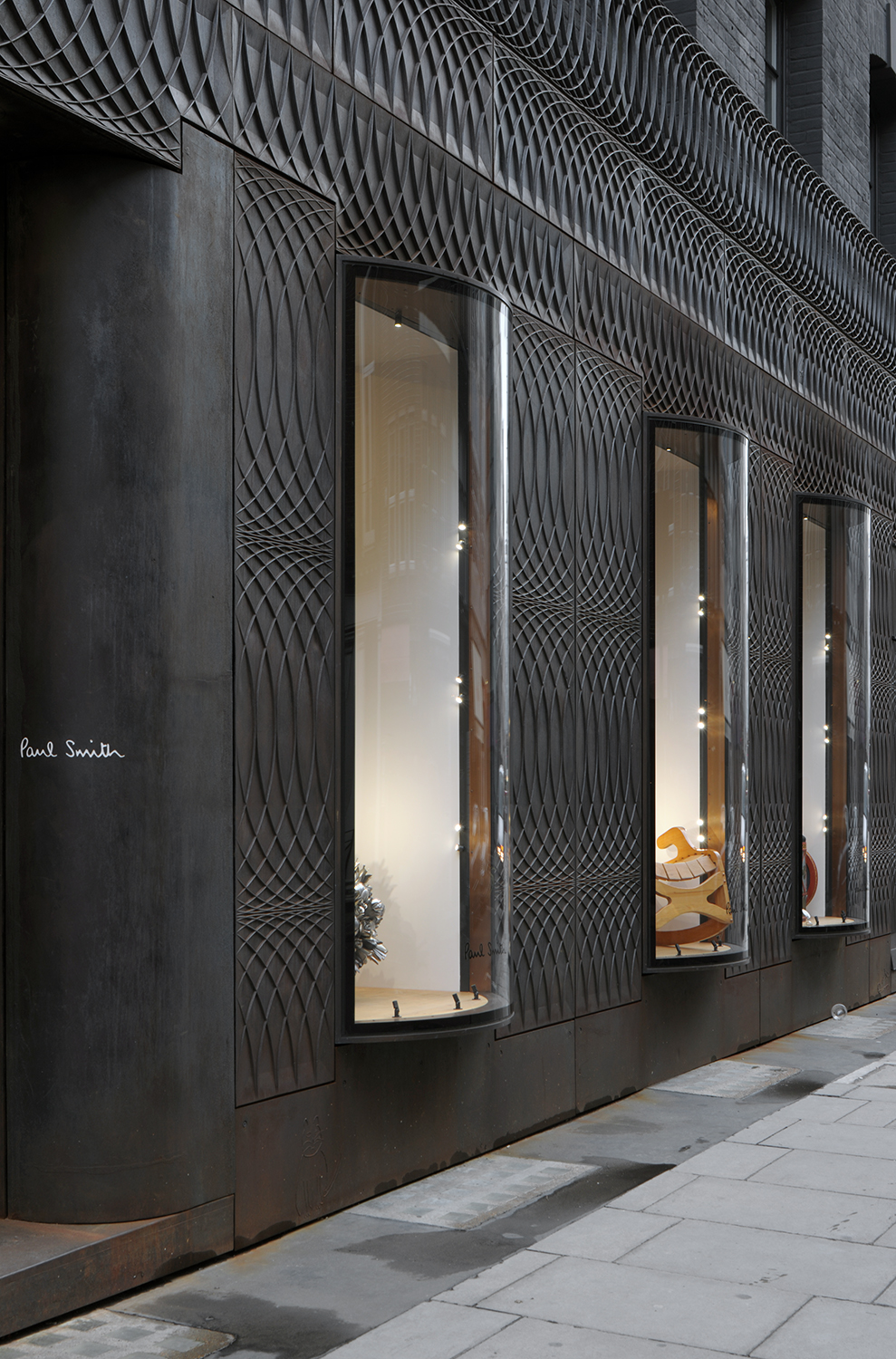 Paul Smith built his reputation on sharp tailoring and attention to detail. His Mayfair store does the same, only in cast iron. Borrowing inspiration from woven hats and finely drawn gold ingots alongside the soft fall of cloth, the intricate facade uses interlocking circles to create a surface that appears woven. The pattern, abstracted from Regency architecture, catches the light at different angles, shifting between depth and opacity. Up close, the texture of the casting process is visible, giving in the imperfections it needs. Paul Smith’s own drawings are embedded in the metal too, adding a playful touch.
Paul Smith built his reputation on sharp tailoring and attention to detail. His Mayfair store does the same, only in cast iron. Borrowing inspiration from woven hats and finely drawn gold ingots alongside the soft fall of cloth, the intricate facade uses interlocking circles to create a surface that appears woven. The pattern, abstracted from Regency architecture, catches the light at different angles, shifting between depth and opacity. Up close, the texture of the casting process is visible, giving in the imperfections it needs. Paul Smith’s own drawings are embedded in the metal too, adding a playful touch.
VICUTU Concept Flagship Store
By AntiStatics Architecture, Beijing, China
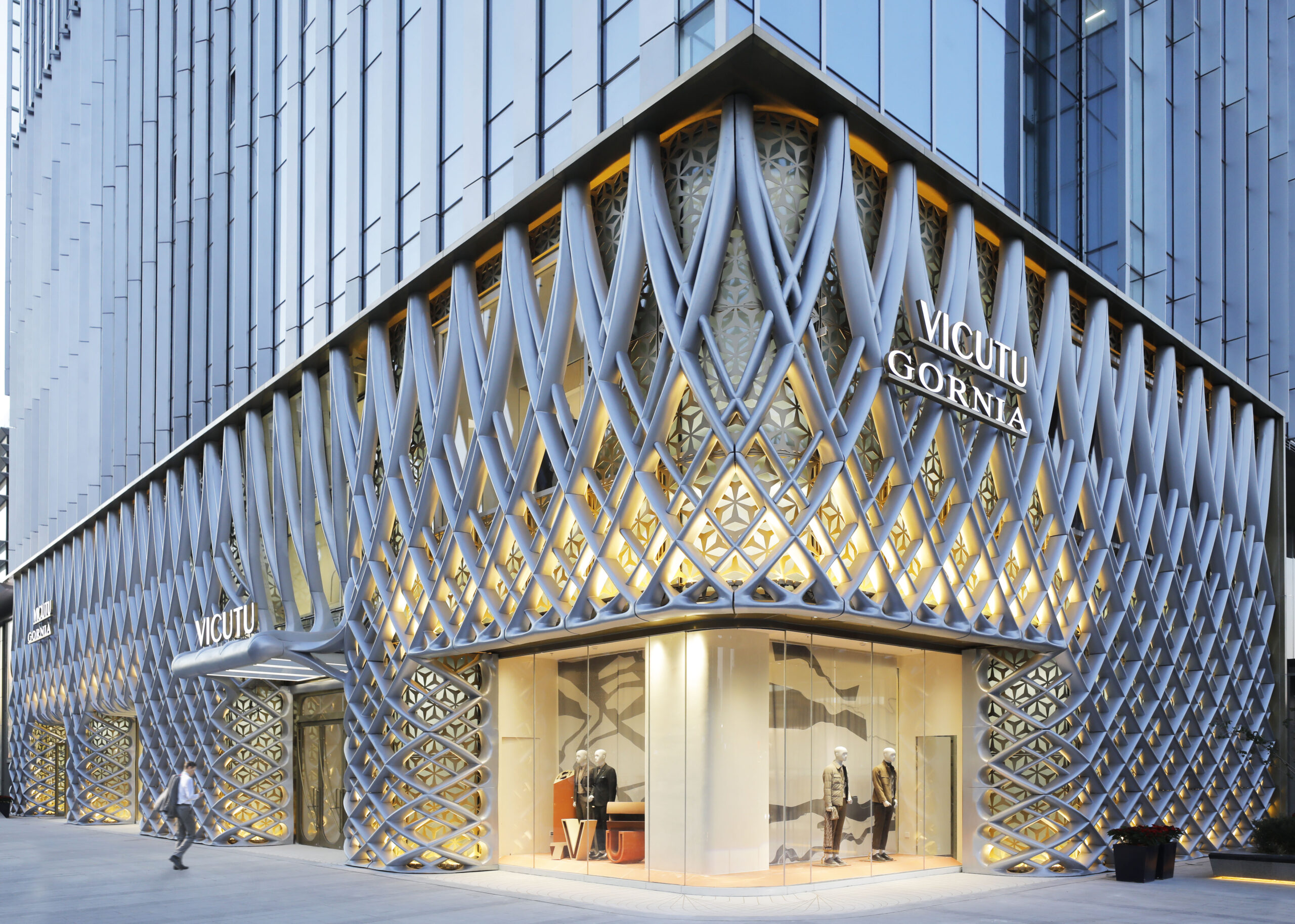
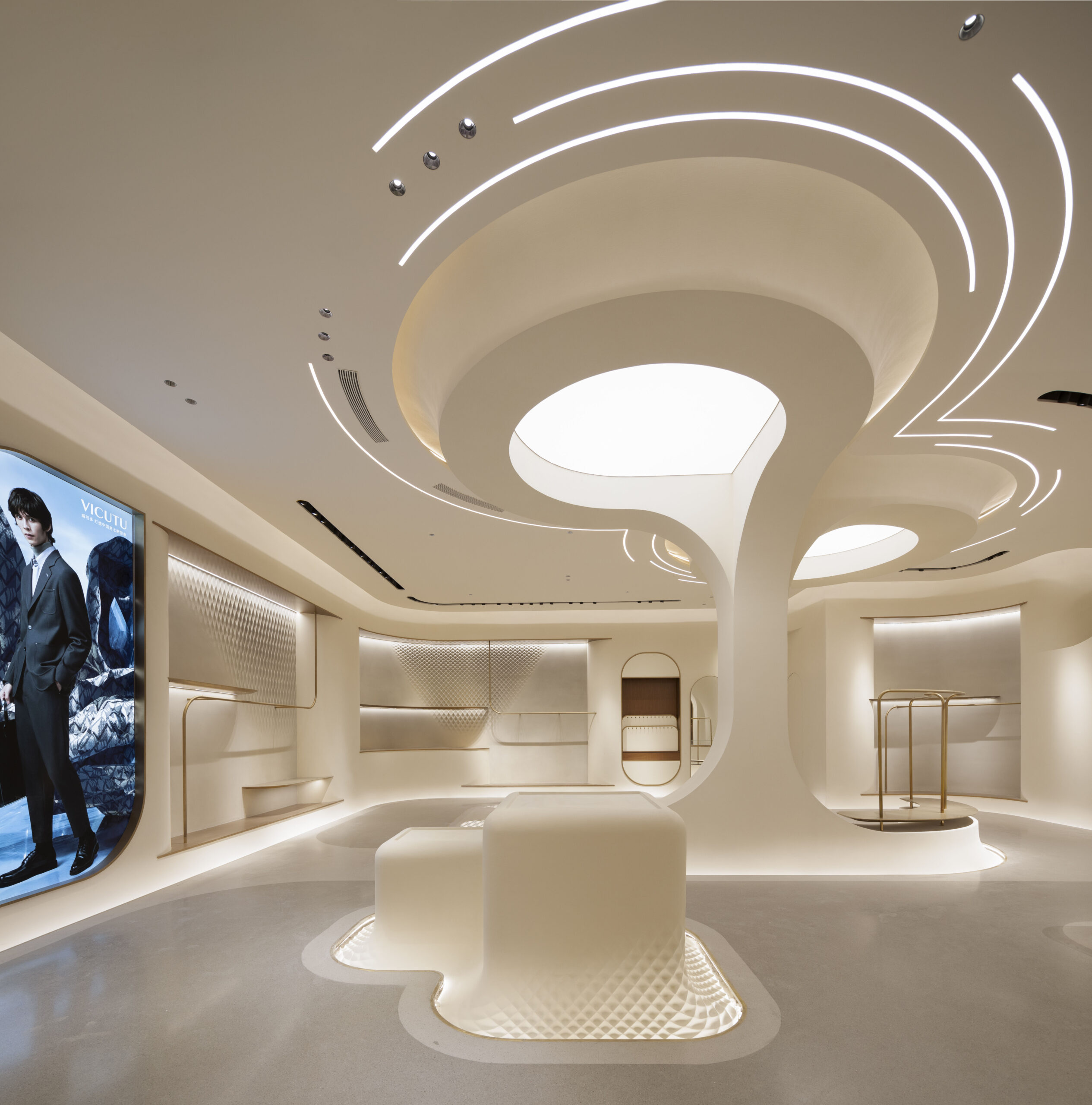
Photos by UKStudio
VICUTU is one of China’s leading menswear brands, specializing in precision tailoring and technical fabrics. Its flagship store brings that same idea to its architecture. The façade is made from bent aluminum sheets, interlocked to form a patterned outer skin. Inside, a woven diagrid motif runs through floors, pedestals and partitions to create a unified design language. Display counters are moulded to the ground, while curving walls direct movement through the space. Spanning two floors and housing multiple brand lines, the store translates the technical craftsmanship of tailoring into the built environment.
Jinke Hanwang Tingquan Xiaozhen lifestyle and arts lounge
By Le Brand Strategy, Xuzhou, China
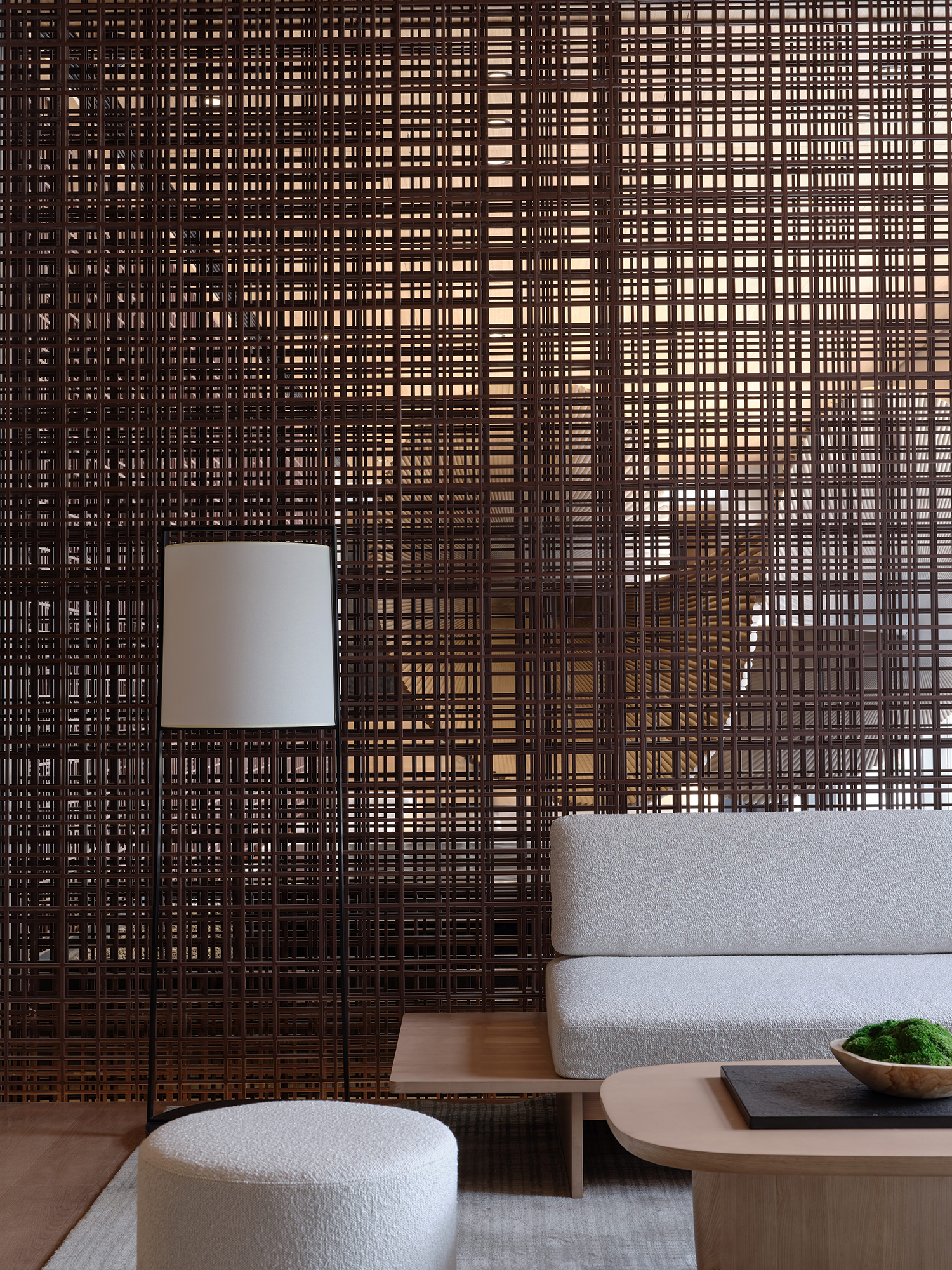
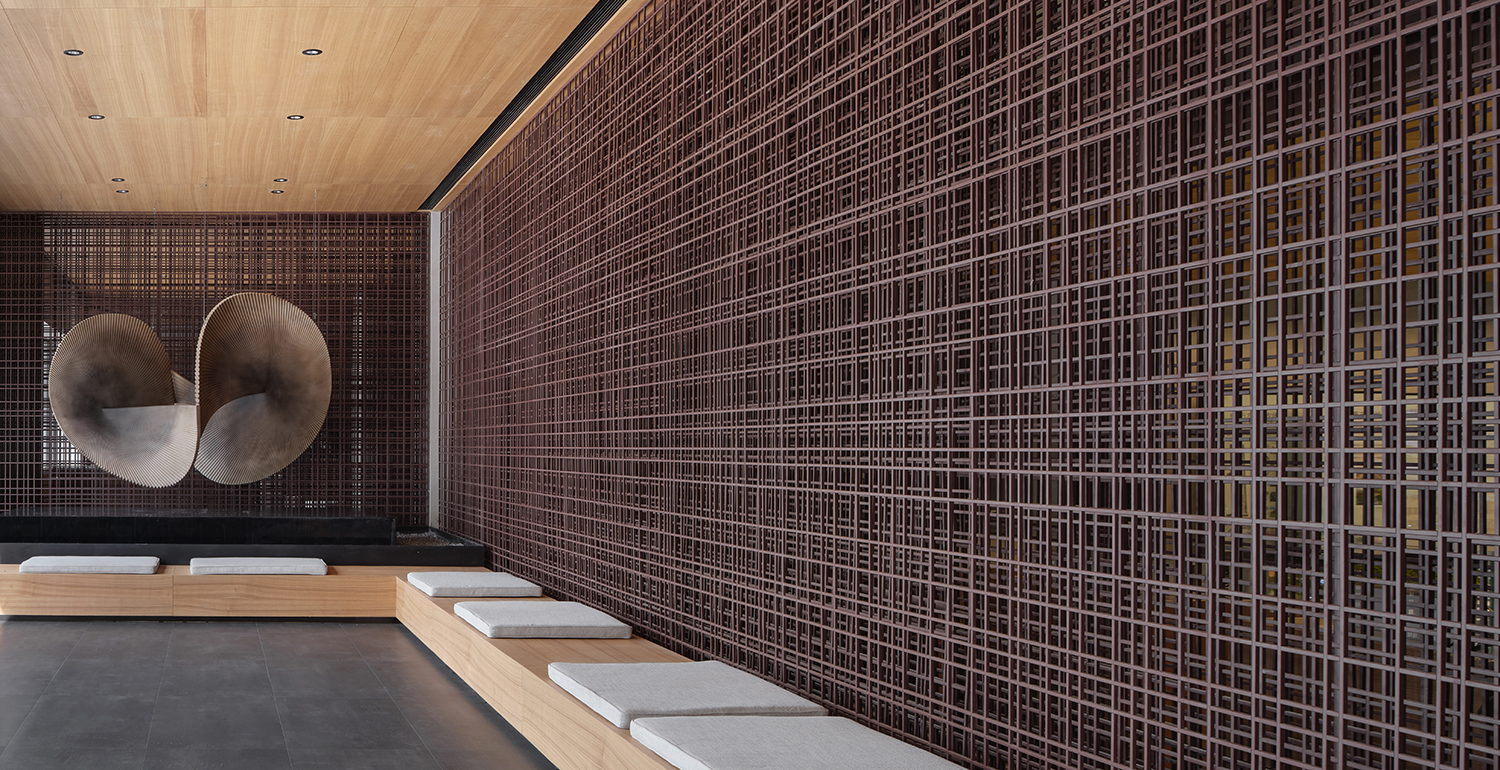
Photos by Sun Xiangyu
At Jinke Hanwang Tingquan lounge, the designers drew directly from the region’s Han dynasty heritage, particularly its celebrated woven textiles — fabrics famously described as thin as cicada wings. Interior partitions are designed to replicate this tradition, formed from transparent mesh and layered screens, they divide spaces, tea rooms and quiet areas without fully separating them. The suspended wooden ceiling also references the iconic curved rooftops of Han palaces, giving the space a sense of historical depth. Throughout, saw-marked timber and raw steel accents keep the space restrained and contemporary, offering a balance between ancient craftsmanship and modern design.
Ceramic House
By Studio RAP, Amsterdam, Netherlands
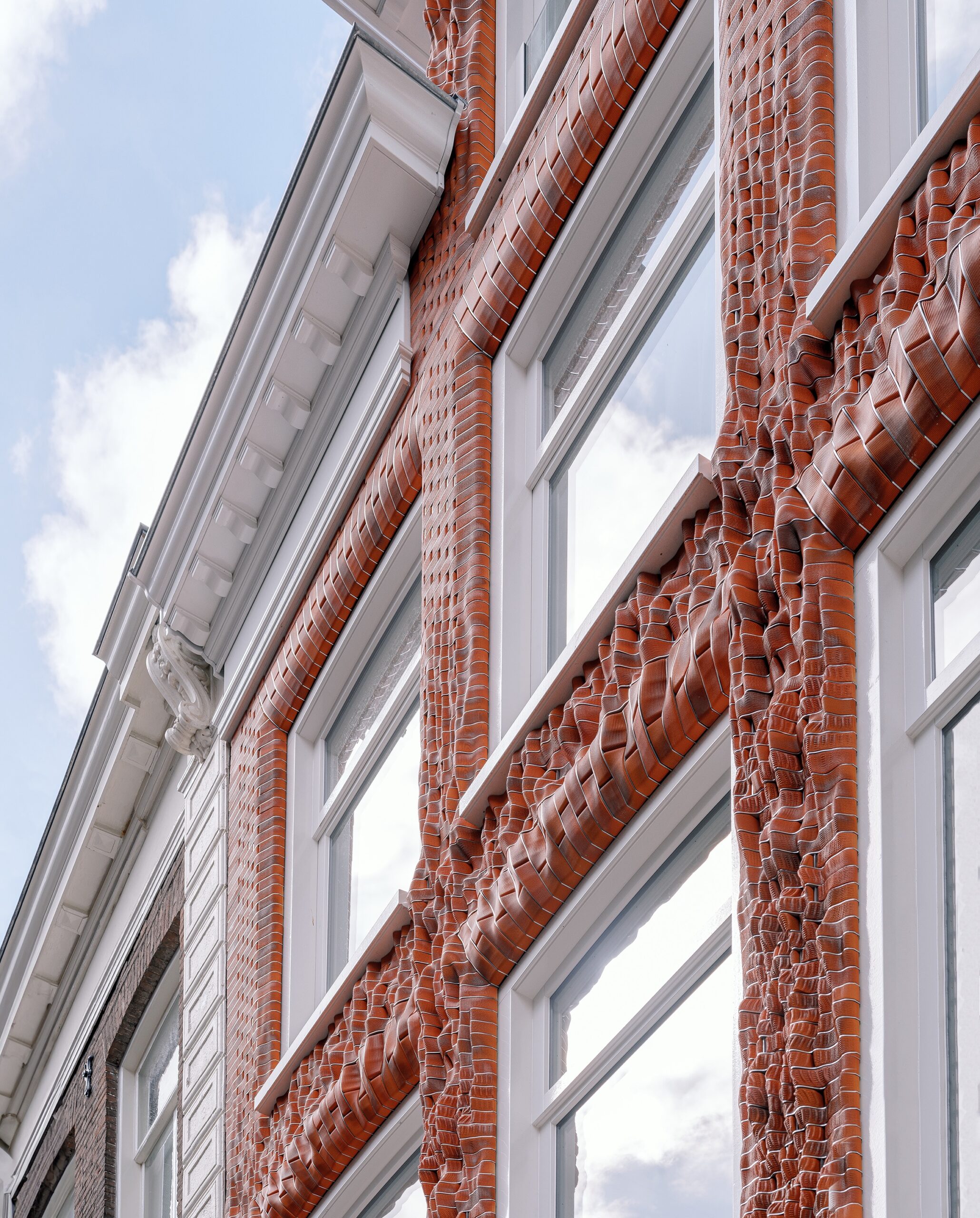
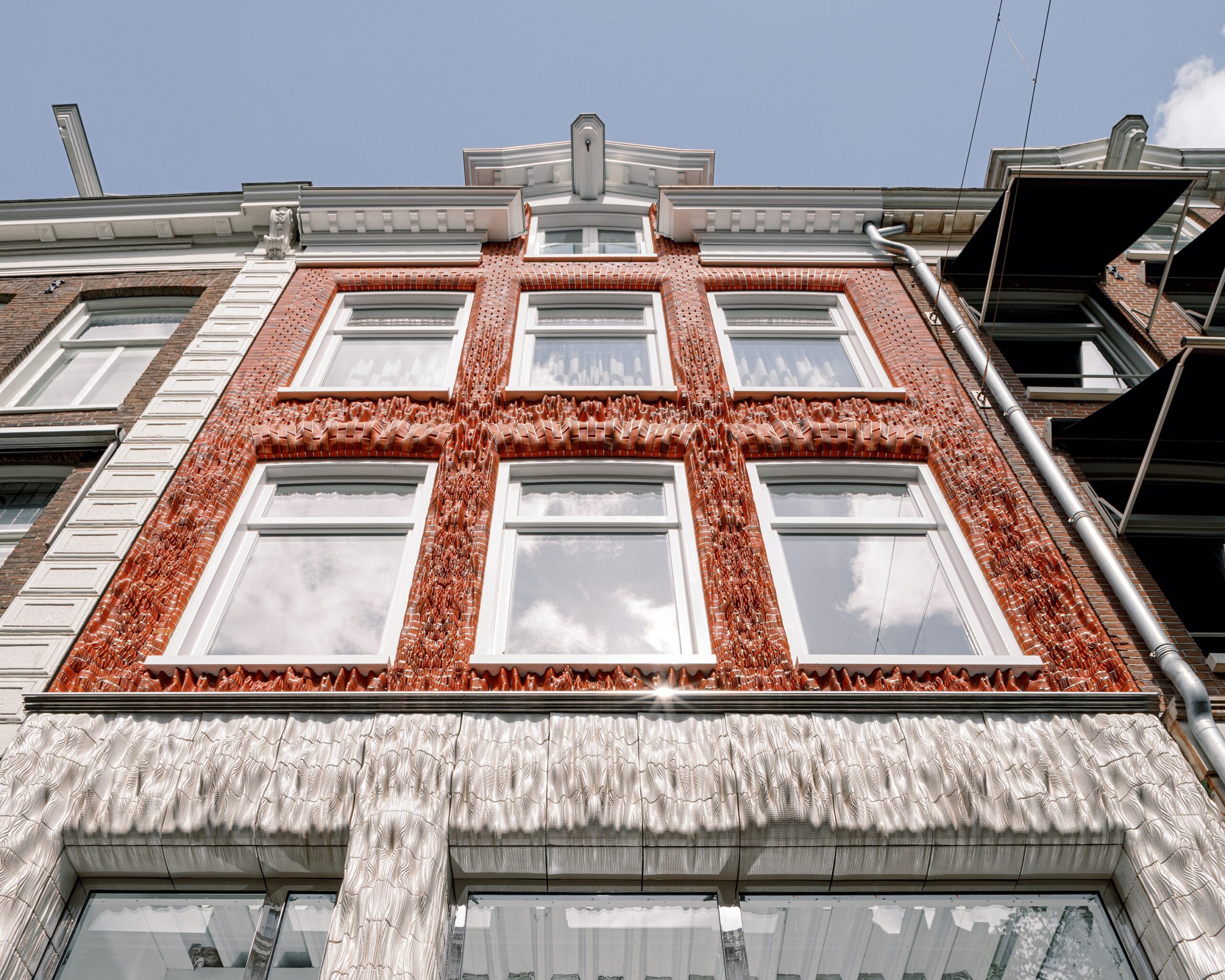
Photos by Riccardo De Vecchi
Studio RAP used its own custom-built 3D-printing technology to create the façade of Amsterdam’s Ceramic House. Inspired by knitted textiles, the ceramic tiles are algorithmically designed and individually printed. Each is entirely unique. At street level, large tiles glazed by Royal Tichelaar in pearl-white with hints of yellow provide illuminating texture up close, while higher up, bricks in varying shades of red blend comfortably with the original masonry. The façade maintains the familiar structure and proportions of P.C. Hooftstraat, yet brings a truly unique aesthetic to one of Amsterdam’s historic streets.
CASA MYM
By Numero 26 Studio, Murcia, Spain
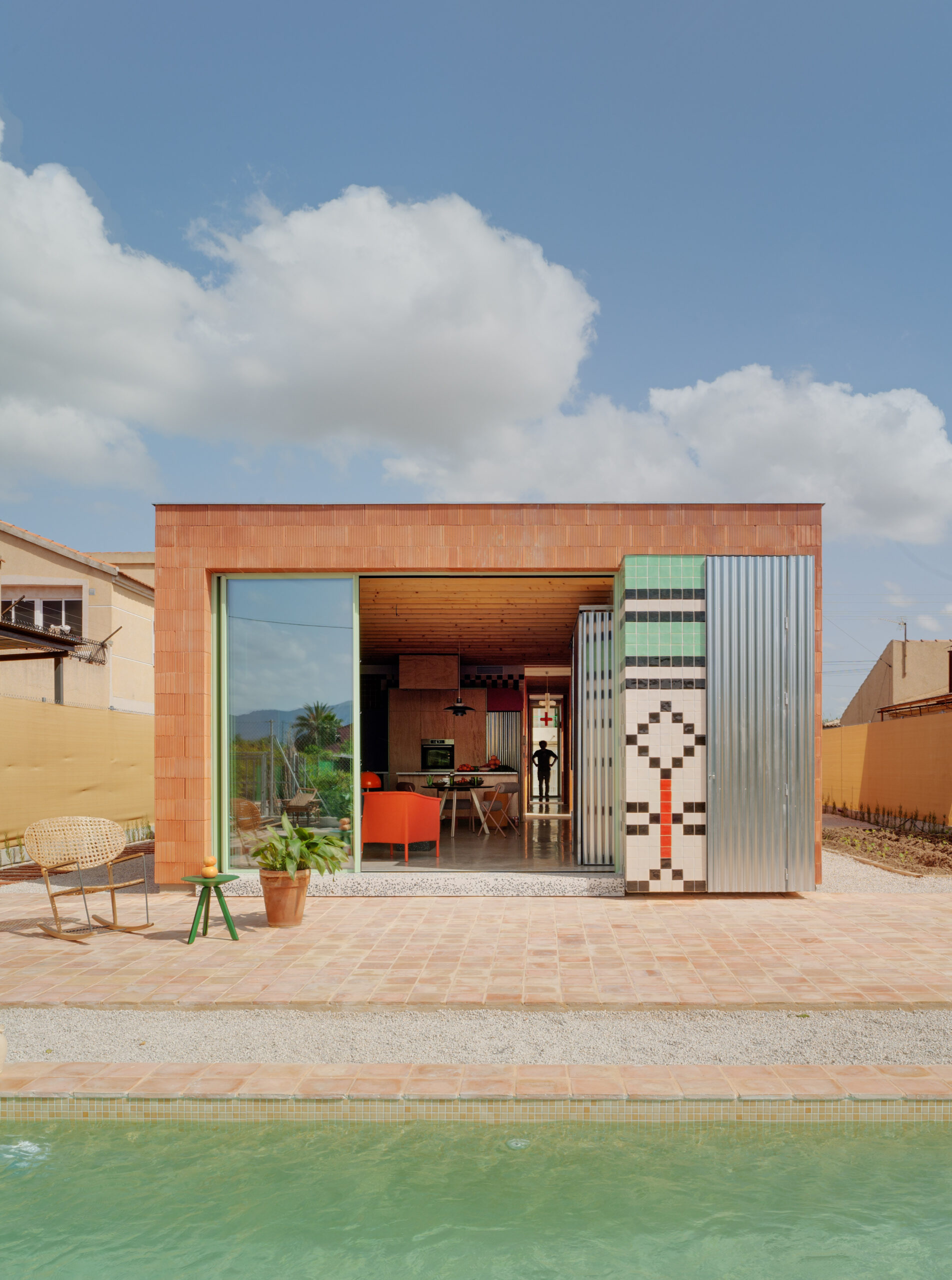
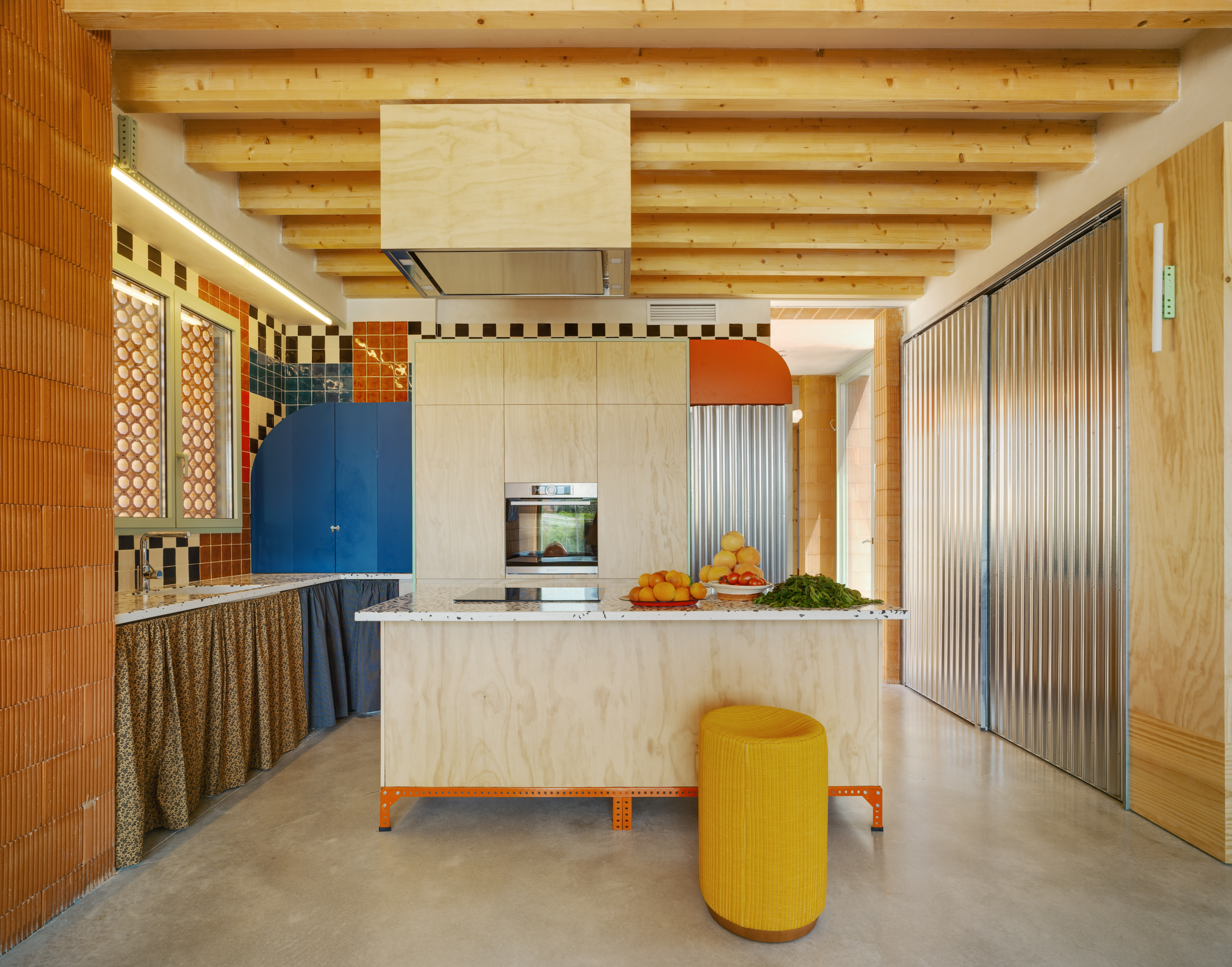
Photos by David Frutos
CASA MYM borrows directly from Murcia’s textile tradition. The ceramic tiles that cover the façade replicate patterns found on local farmers’ embroidered workwear. This connection grounds the building naturally to its setting. Divided into three separate volumes, the house angles towards views of the surrounding orchards and mountains. While, inside, simple materials like unfinished clay walls, galvanized metal doors and pine joinery keep the design practical and straightforward.
Architects: Want to have your project featured? Showcase your work by uploading projects to Architizer and sign up for our inspirational newsletters.

